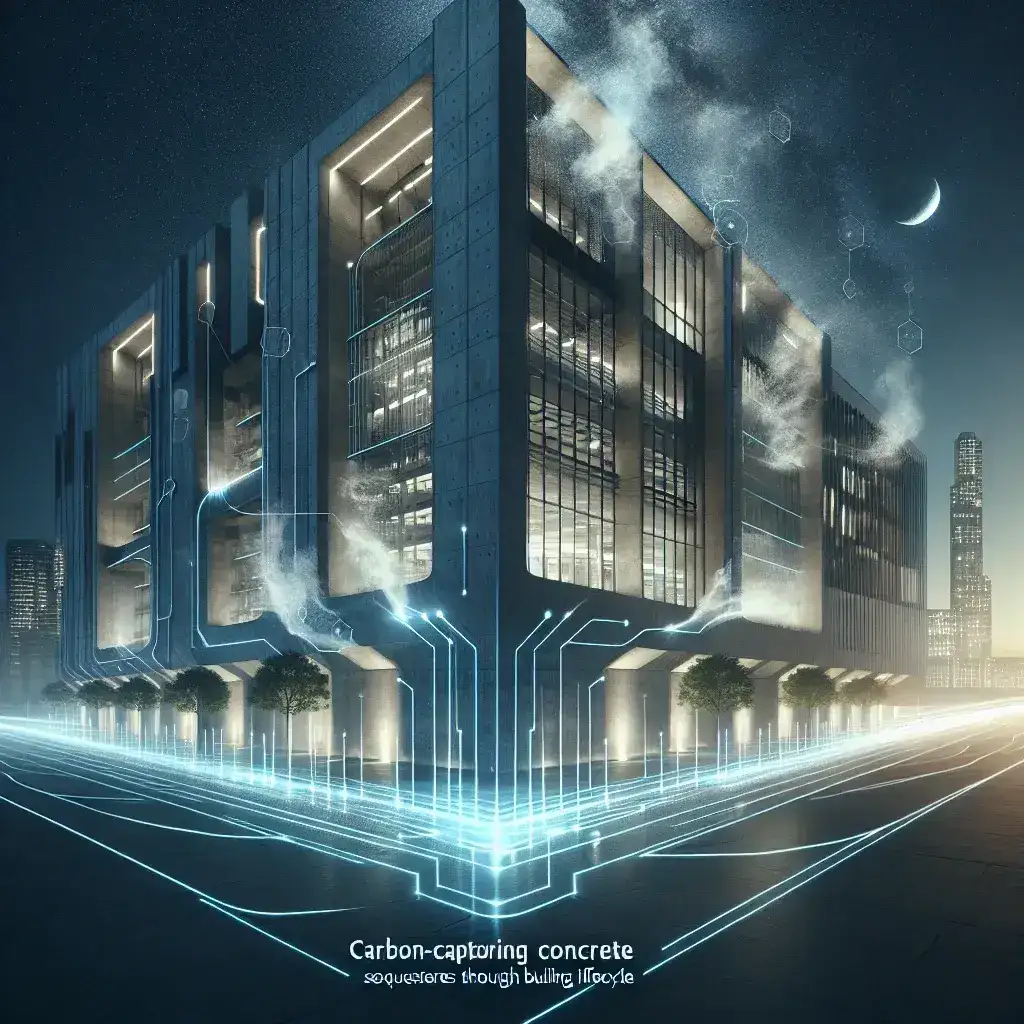Introduction
As the world grapples with the urgent need to combat climate change, innovative solutions are emerging across various sectors. One of the most groundbreaking is the development of carbon-capturing concrete, a material designed not only to construct buildings but also to actively sequester carbon dioxide (CO₂) throughout its lifecycle. This article delves into the science, benefits, and future of carbon-capturing concrete, shedding light on how it can play a pivotal role in reducing the carbon footprint of the construction industry.
The Science Behind Carbon-Capturing Concrete
Concrete is one of the most widely used construction materials globally, accounting for approximately 8% of global CO₂ emissions. Traditional concrete production involves the release of significant amounts of CO₂ due to the calcination of limestone and the energy-intensive processes involved in cement manufacturing. In contrast, carbon-capturing concrete integrates a process known as carbon sequestration, which allows the material to absorb and store CO₂ from the atmosphere.
The Mechanism of Carbon Sequestration
- Incorporation of CO₂: Carbon-capturing concrete utilizes CO₂ as a fundamental component in its production. Specially designed processes allow for the direct injection of CO₂ into the concrete mix, where it undergoes a series of chemical reactions, transforming into stable mineral forms.
- Natural Absorption: Once cured, concrete can further absorb CO₂ from the atmosphere over time. This process, known as carbonation, occurs as CO₂ reacts with the calcium hydroxide present in the concrete, producing calcium carbonate.
Benefits of Carbon-Capturing Concrete
The advantages of carbon-capturing concrete extend beyond merely reducing emissions. Here are some key benefits:
1. Significant Reduction in Carbon Footprint
By integrating CO₂ into the production process and facilitating natural absorption, carbon-capturing concrete can potentially reduce the carbon footprint of traditional concrete by up to 70%. This is a monumental shift that can lead to substantial environmental benefits.
2. Enhanced Durability
Research suggests that carbon-capturing concrete can exhibit improved durability compared to conventional concrete. The carbonation process not only sequesters CO₂ but also strengthens the concrete, making it more resilient to environmental factors.
3. Cost-Effectiveness
While the initial investment in carbon-capturing technology may be higher, the long-term savings from reduced energy consumption, maintenance costs, and the potential for carbon credits make it an economically viable option.
4. Positive Environmental Impact
As urbanization continues to rise, the demand for sustainable construction materials becomes increasingly critical. Carbon-capturing concrete aligns with global sustainability goals, helping to mitigate climate change and promote greener building practices.
Real-World Applications
The adoption of carbon-capturing concrete is gaining momentum, with several notable projects demonstrating its potential:
Case Study 1: The International Airport Expansion
In a recent airport expansion project, carbon-capturing concrete was utilized for both the runway and terminal construction. Engineers reported a 50% reduction in the project’s overall carbon emissions, showcasing the material’s efficacy in large-scale applications.
Case Study 2: Urban Development Initiatives
Several urban development initiatives are incorporating carbon-capturing concrete into residential buildings. Homeowners and developers are increasingly recognizing the long-term benefits of using sustainable materials, leading to a surge in demand.
Future Predictions and Trends
The future of carbon-capturing concrete looks promising, with several trends expected to shape its development:
1. Technological Advancements
Ongoing research and development will likely lead to more efficient methods of carbon capture and incorporation into concrete. Innovations such as biologically enhanced concrete that utilizes microorganisms for CO₂ absorption may emerge.
2. Policy and Regulation Changes
As governments worldwide commit to net-zero targets, policies promoting sustainable building practices will drive the adoption of carbon-capturing concrete. Incentives for using low-carbon materials are expected to become more prevalent.
3. Market Growth
The carbon-capturing concrete market is anticipated to grow significantly as awareness of its benefits spreads. This growth will be fueled by increased collaboration between industry stakeholders, researchers, and policymakers.
Challenges and Considerations
While the prospects for carbon-capturing concrete are bright, several challenges must be addressed:
1. Scale of Production
Scaling up the production of carbon-capturing concrete to meet global demand poses logistical and technical challenges that must be overcome.
2. Public Perception
Educating the public and stakeholders about the benefits and reliability of carbon-capturing concrete is crucial for its widespread adoption.
3. Initial Costs
The initial costs associated with implementing carbon capture technology in concrete production may deter some stakeholders. However, as technologies develop, these costs are expected to decrease.
Conclusion
Carbon-capturing concrete represents a significant advancement in sustainable construction, providing a viable solution to reduce the carbon emissions associated with traditional concrete. With its ability to sequester CO₂ throughout the building lifecycle, it not only contributes to climate change mitigation but also promotes eco-friendly building practices. As the construction industry continues to evolve, embracing innovations like carbon-capturing concrete will be essential in building a sustainable future for generations to come.

